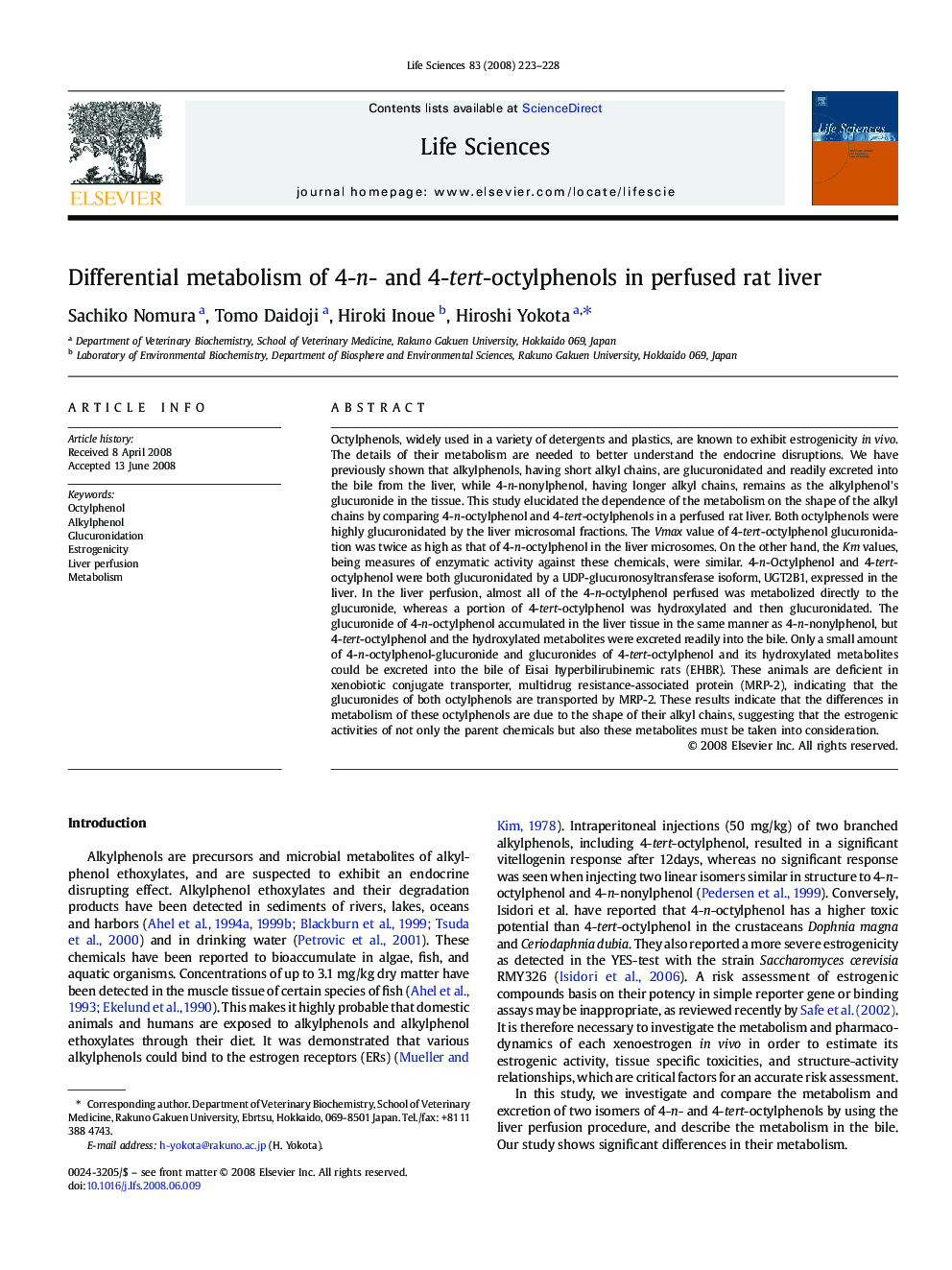| Article ID | Journal | Published Year | Pages | File Type |
|---|---|---|---|---|
| 2552847 | Life Sciences | 2008 | 6 Pages |
Octylphenols, widely used in a variety of detergents and plastics, are known to exhibit estrogenicity in vivo. The details of their metabolism are needed to better understand the endocrine disruptions. We have previously shown that alkylphenols, having short alkyl chains, are glucuronidated and readily excreted into the bile from the liver, while 4-n-nonylphenol, having longer alkyl chains, remains as the alkylphenol's glucuronide in the tissue. This study elucidated the dependence of the metabolism on the shape of the alkyl chains by comparing 4-n-octylphenol and 4-tert-octylphenols in a perfused rat liver. Both octylphenols were highly glucuronidated by the liver microsomal fractions. The Vmax value of 4-tert-octylphenol glucuronidation was twice as high as that of 4-n-octylphenol in the liver microsomes. On the other hand, the Km values, being measures of enzymatic activity against these chemicals, were similar. 4-n-Octylphenol and 4-tert-octylphenol were both glucuronidated by a UDP-glucuronosyltransferase isoform, UGT2B1, expressed in the liver. In the liver perfusion, almost all of the 4-n-octylphenol perfused was metabolized directly to the glucuronide, whereas a portion of 4-tert-octylphenol was hydroxylated and then glucuronidated. The glucuronide of 4-n-octylphenol accumulated in the liver tissue in the same manner as 4-n-nonylphenol, but 4-tert-octylphenol and the hydroxylated metabolites were excreted readily into the bile. Only a small amount of 4-n-octylphenol-glucuronide and glucuronides of 4-tert-octylphenol and its hydroxylated metabolites could be excreted into the bile of Eisai hyperbilirubinemic rats (EHBR). These animals are deficient in xenobiotic conjugate transporter, multidrug resistance-associated protein (MRP-2), indicating that the glucuronides of both octylphenols are transported by MRP-2. These results indicate that the differences in metabolism of these octylphenols are due to the shape of their alkyl chains, suggesting that the estrogenic activities of not only the parent chemicals but also these metabolites must be taken into consideration.
